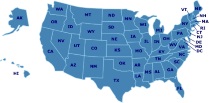Resources
Spell to Write & Read
This teacher's manual, written by a homeschool educator with experience as a professional school teacher and private tutor, shows how to teach reading the "write" way. By phonetically teaching spelling from the start as the backbone for reading, all children can be taught, regardless of learning styles, to read and spell. If your student knows how to read already, this program can improve his or her spelling. Find out more about this product here.
Sing, Spell, Read & Write
Sing, Spell, Read & Write is a phonics-based program that uses a 36-step program of carefully sequenced steps to teach reading, writing, and spelling. More product information can be found here.
A Reason For® Spelling
A Reason For® Spelling combines the latest research on how children learn to spell with all the strengths of traditional programs. It teaches highfrequency base words, plus hundreds of other word forms. Values-based stories set the theme each week and help make spelling fun. You'll find product information about A Reason For® Spelling here.
Learning Language Arts Through Literature
Learning Language Arts Through Literature is a fully integrated language arts program that teaches grammar, reading, spelling, vocabulary, writing mechanics, creative writing, thinking skills and more.
Spelling for the Homeschooled Student
PBS Kids Spelling Games
Your kids can practice spelling with these online games.
When Should I Start Teaching Spelling in Homeschool?
Spelling is more than just associating letters with sounds and deciphering them. Spelling is an essential element to writing clearly and convincingly. Some programs start testing children right away like at Kindergarten level. However, instead of teaching spelling, a program may add the element of testing.
Teaching spelling is one thing and testing spelling is quite another thing.
How I Teach a Large Family in a Relaxed, Classical Way: Language Arts
Tips for teaching language arts (writing, grammar, handwriting) in a large family.
Scripps National Spelling Bee
Scripps National Spelling Bee is the most widely known spelling bee organizer in the world. In general, the program is open to students who have not reached their 16th birthday on or before the date of the national finals and who have not passed beyond the eighth grade at the time of their school finals.
How to Teach Spelling in Your Homeschool
Homeschooling is a great opportunity because you can choose the homeschool spelling curriculum that matches your child's needs. As your child's teacher, you decide the method of instruction, how frequent the lessons are, the pace, the intensity, and the amount of review. No one else can do that for your child! For all children, from those needing remedial help to those who are gifted in this area, individualized spelling instruction is an unbeatable choice.
Featured Resources
As an Amazon Associate, we earn from qualifying purchases. We get commissions for purchases made through links on this site.
LeapPad Game - Mind Wars Jr. Interactive Game
Bring a friend and try this brand new way to play with your LeapPad! Race around the board in this fast-paced, wonderfully wacky game. Be the first to close all five windows and you will become the Mind Wars master and learn important 1st and 2nd grade skills in math, language arts, life science, physical science, and social studies!
The Work-at-Home Sourcebook
This indispensable directory contains information not found in any other book on the subject. The Work-at-Home Sourcebook is the only book available which gives specific information for finding, applying for, and getting home work with AT&T, J. C. Penney, and more than 1,000 other companies that routinely hire qualified home workers. Contact information, job descriptions and requirements, and details on pay and benefits are included. Other chapters cover handicrafts, franchises, telecommuting, l...
Christian Unschooling : Growing Your Children in the Freedom of Christ
Is unschooling incompatible with Christianity? Elissa Wahl and Teri Brown argue that they are not incompatible, but complementary. Unschooling offers a different path to learning. This book explains what unschooling is (and isn't) and offers support for your unschooling journey. Includes information and support, along with essays on how they unschool guided by the Lord.
English from the Roots Up
English from the Roots Up explores the Latin and Greek roots of words. Many people haven't realized how valuable the Latin and Greek vocabulary is in the formulation of the finely structured English vocabulary of today. Even learning a few Latin and Greek root words gets you hooked and you want to learn more. Why? Because you can move from "what words mean" to "why words mean"&mdashin short, a thinking vocabulary. You'll find product information here.
First Language Lessons for the Well-Trained Mind
Includes scripted lessons and lovely illustrations to offer encouragement and understanding to children in grammar, copywork, narration, picture study, and other classical technique. These lessons will help develop the student's language ability and skills in oral composition.




